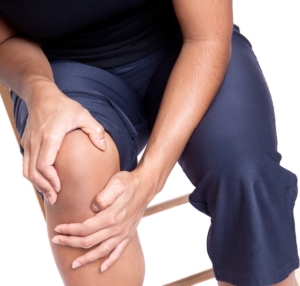It’s a beautiful morning, the first rays of light poke through your windows, birds are chirping, and the smell of fresh air hits your nose. You hear the floorboards creak as you make your way over to the kitchen and your freshly brewed pot of coffee. But wait, that’s not the hardwood floor creaking, it’s your knees!
Have you noticed that your knees, ankles, wrists, shoulders, or other joints have started to sound like Rice Krispies®; snap, crackle, pop™? You are not alone. More than 15 million Americans are affected by a degenerative arthritis known as, osteoarthritis. The word osteoarthritis breaks down into three words; “osteo” meaning bone, and “arthro” meaning joint, and “itis” meaning inflammation. This is the most common type of arthritis and is often referred to as “wear and tear” arthritis. Osteoarthritis typically affects people over the age of 45 and worsens with continued use of the joint. However, I am starting to see it in much younger generations as well.
Our joints provide movement, stability, flexibility, and protection to our musculoskeletal system. Cartilage is a white, flexible connective tissue that coats the ends of the bone and allows for fluid motion of the joint. Synovium tissue lines the joint capsule and secretes the lubrication needed. Think of your knee or elbow bending back and forth like a hinge. With proper lubrication and oil, the hinge will move freely. Joint inflammation is one of our body’s natural defense mechanisms to provide protection to an area that is healing. Chronic, or long term, inflammation it will cause abnormal tissue and bone changes and an eventual breakdown of the cartilage in the joint. The inflammation will lead to redness or warmth, swelling, pain, and a loss of mobility in the joint. Left untreated, the inflammation can cause a positive feedback loop, bringing more inflammation and degenerative changes as time progresses.
Stages of Osteoarthritis
There are four progressive stages of osteoarthritis:
Stage 0: Normal – there is no radiographic evidence of arthritic changes or loss of joint space. Mobility is good and there is no pain.
Stage One: Minor – Beginning phase of wear and tear begins in the joint capsule. There may be a mild decrease in joint space as the cartilage wears down and the bone may start to have subtle changes as it adapts to the added pressures inside the joint. There may or may not be pain in this stage.
Stage Two: Mild – The joint space is noticeably decreased and the cartilage is starting to wear down. Bone spurs may be developing. Increased pain and a loss of mobility are present.
Stage Three: Moderate – There is obvious erosion of the cartilage and joint capsule. Bone spurs may have developed and be pronounced. The joint is inflamed and pain can be moderate to severe especially after activity. There is significant loss of joint space.
Stage Four: Severe – The cartilage has completely worn away, there is a severe loss of joint space, and the joint may be bone-on-bone. Bone spurring may be present and significant. The bone’s physical appearance may be changing due to the added pressures. Severe pain and loss of mobility is associated with this stage, especially with activity or standing for long periods of time. Knee pain may not subside when resting and may be worse in the mornings.
Symptoms
For stages one through four, symptoms will vary but may include:
- Pain in the joint after activity and repeated use
- Pain, swelling and stiffness after long periods of inactivity
- Continuous joint pain even at rest
- Throbbing, stabbing, or burning pain in the joint
The degree of symptoms will vary greatly. Some people become completely debilitated, while others may experience few symptoms even though they may be in a later stage of osteoarthritis. There can be periods of intense pain, followed by periods of no pain.
A proper neurological and orthopedic exam, followed with x-ray analysis can be performed to determine which stage you are in. MRI or CT scans can be utilized as well.
Causes of Osteoarthritis
Osteoarthritis is not a systemic condition and does not spread throughout the body. Instead it will only affect joints where the deterioration has occurred. The most common joints affected are the knees, hips, shoulders, wrist and hands, spine, and feet. In the spine pain can be both in the cervical (neck) and lumbar (lower back). If arthritic changes occur this could cause a debilitating condition known as spinal stenosis, which is a narrowing of the spinal canal. This will lead to severe inflammation of the spinal cord and affect the nervous system. Symptoms may include severe lower back pain followed by radiating pain, tingling, numbness, or burning sensation in the upper or lower extremities. That doesn’t sound like fun, does it? So let’s make sure that to prevent that from happening!
Causes include:
- Repetitive activities at work and at home
- Poor posture and ergonomics
- Trauma to a joint
- Inflammatory foods – sugar, wheat/grains, dairy, soda
- Inactivity (“use it or lose it” principle)
- Genetic factors
- Joint and spinal misalignment
Healing Naturally
If you want to heal naturally, a great place to start is asking the question of “what is the cause?” This root cause analysis can help you dig deeper into why the inflammation is in the joint to begin with, why it is worsening, and how to start mobilizing the body to remove the inflammation.
- Move it or Lose It – Physical fitness is important in restoring mobility to the joint. Even light exercise is important to maintain proper muscle tone and weight bearing on the bones and joints. A good place to start is with light aerobic activity, such as an elliptical machine or water exercises. Graduate to longer aerobic activity and then mix with circuit training, weight resistance and active stretching techniques.
- Dietary Intervention – Your joints are as healthy as the food you are eating. Highly inflammatory food groups will cause more inflammation in the joints and lead to further degeneration. Remove ALL inflammatory food groups immediately and start rebuilding the joint through a clean, anti-inflammatory diet. The following are few great things to add in:
Bone Broth and Collagen – the base building material of cartilage. Collagen is essential for helping restore joint health and healing Leaky Gut.
Essential Fatty Acids are Key! Eat healthy fat foods such as wild-caught salmon, walnuts, flax seeds, hemp seeds, coconut/olive/avocado oils. These omega-3 fatty acids contain primarily EPA and DHA, which have been shown in studies to help maintain bone health and flexibility.
Antioxidant Rich Foods – Cruciferous vegetables such as broccoli, kale, collards, bok choy, and spinach, along with low carbohydrate fruits such as blueberries, strawberries, blackberries, and raspberries help reduce the free radicals caused by degenerative changes.
- Supplementation
Collagelatin – supports rapid repair of tissue, bone, hair, skin, and nails. Helps to keep your cartilage healthy and joints smooth.
Glucosamine and Chondroitin sulfate – provides the joints with the building blocks they need to help repair the natural wear on cartilage. Protects the cartilage and attracts fluids that give the tissue its shock absorbing quality.
MSM – Because of MSM’s sulfur content, it is used by the body to maintain normal connective tissues. MSM may have anti-inflammatory activities, chemopreventive properties, anti-atherosclerotic action, and free radical scavenging activity (J OA Cartilage 2006)
Turmeric, Cayenne, Cinnamon, Ginger – these herbs provide many great health benefits but can be very useful for their anti-inflammatory properties in the joints. Cinnamon also helps control insulin which can have an indirect effect on joint health through blood sugar control. Try in capsule, powder form, in your smoothie, in your morning water, and in tea.
- Integrative Approach
Hylauron and Stem Cell injections – Minimally invasive, non-steroidal, injections can be done to quickly lessen the pain, increase mobility, and regenerate cartilage, bone and tissue in the joint.
Chiropractic and Rehabilitative Exercises – When joint pain is caused by poor spinal and hip alignment, muscle imbalance, or poor core stabilization, Chiropractic adjustments and rehabilitation may be used to correct the alignment concerns and strengthen your surrounding muscles along with improving flexibility of the joints
Lifestyle intervention works, but only if you ACT! Get up, get moving, eat cleaner. Your joints will thank you for it! And maybe you’ll wake up one morning and the creaky noises made when walking to your kitchen will be the hardwood floor and not your knees.


